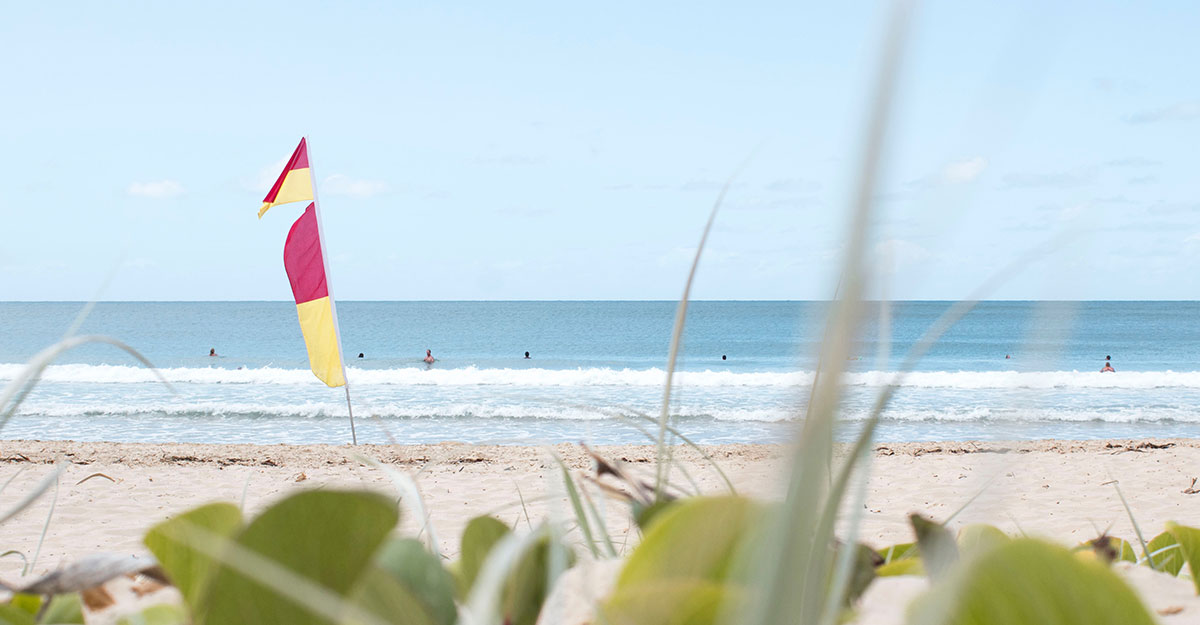on
A relaxing beach weekend can turn ugly with just one rogue wave or one angry sea creature. While most bad beach days end with little more than a sunburn in need of a good aloe vera soak, serious injuries are more common than we’d like to believe. Here are a few beach safety tips to help you keep your beach trips as safe as can be.
Watch for Beach Warning Flags
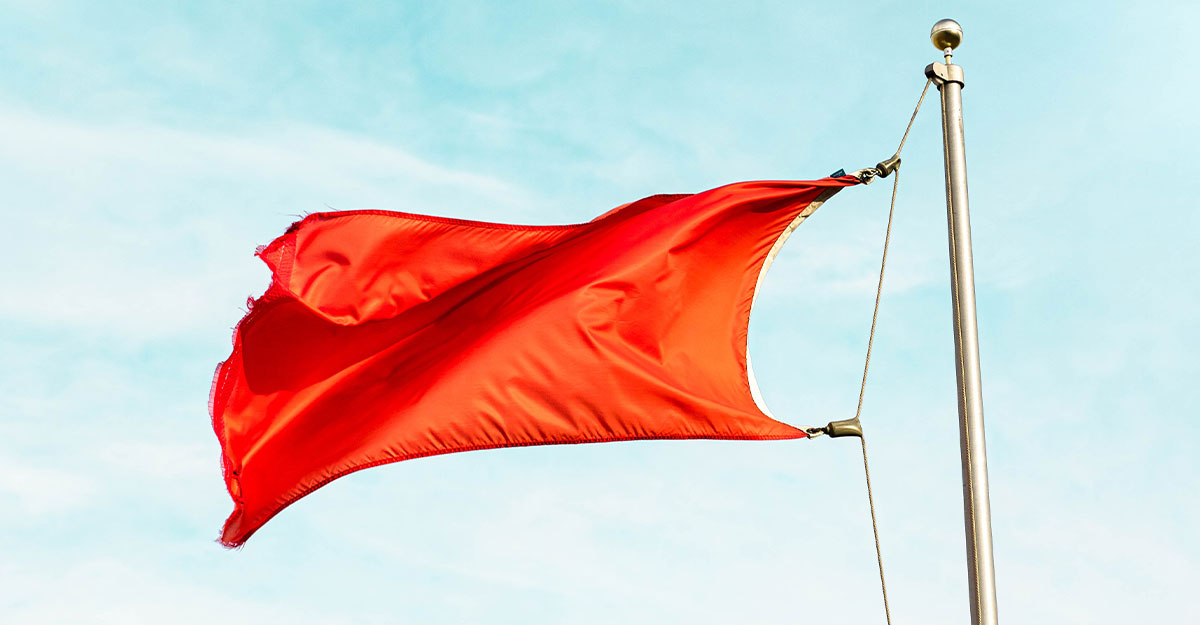
Different beaches (and states) have different colored flags with assigned meanings, so be sure to ask the lifeguard if you’re not sure what the flags signify.
- Generally, red flags indicate strong surf and currents (i.e., “Be Careful!”). At some beaches, red means “beach closed” — so be sure to check before entering the water.
- Yellow flags indicate moderate surf and currents — the water is likely to be rough but not exceedingly dangerous. Exercise caution and stay near the lifeguards.
- Green flags indicate the ocean is calm or clear (though it’s always smart to remain alert).
- Blue or purple flags often indicate that potentially dangerous marine life (think sharks or jellyfish) are in the area or have been spotted nearby. Use caution.
Remember: Not all beaches are suitable for swimming, so know the rules before you set foot on the sand.
Beware of Rip Currents
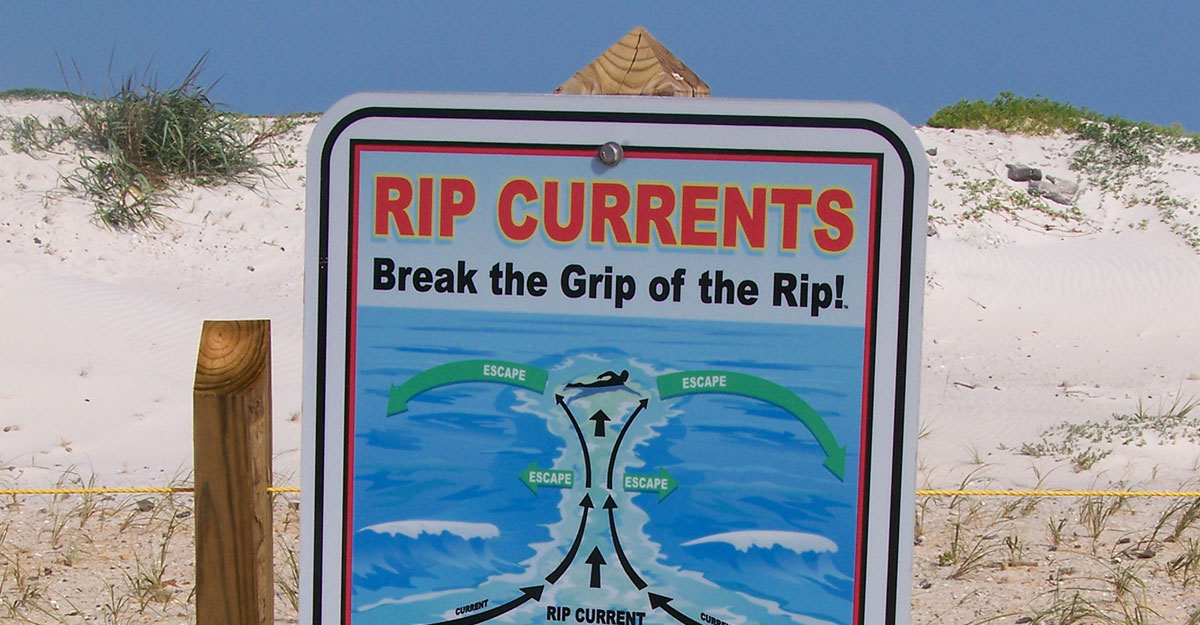
Sometimes nature warns us to stay away. Rip currents are a prime example of this: the strong currents of water that rush out to sea. They are stronger than even the best swimmer. Rip currents can form on any beach that has breaking waves. If you look closely, you can see a rip current. It will have dark muddy water and be very choppy. You might see foam and other debris floating out to sea. If you see a rip current, stay away! They are very dangerous.
If you are ever caught in a rip current, don’t panic. Relax, and swim parallel to the beach. Don’t try to fight it. If you have trouble swimming, tread water and call for help. Parents! Keep your kids nearby when they’re playing near the ocean.
Don’t Climb on Drift Logs
Logs on wet sand or in the water are especially dangerous. The ocean is strong enough to pick up even the biggest log and plop it down on top of you. If you see a log in the surf or on wet sand, stay off of it.
Beware of Sneaker Waves
Watch out for “sneaker waves.” Sneaker waves are unpredictable and appear suddenly. They can rush up high on the shore with enough force to knock you down and drag you out to sea. Keep one eye on the ocean.
Be Careful On Coastal Cliffs & Rocks
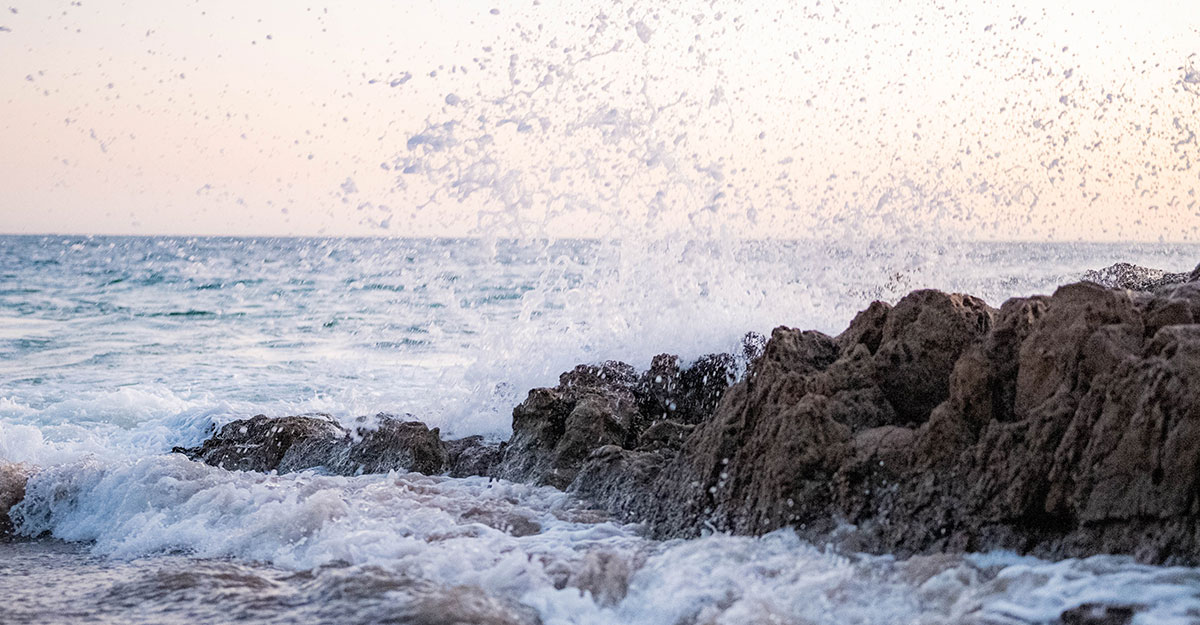
Ocean spray and heavy rains can make rocks and trails slippery and unsafe. Stay behind fences. They are there for your safety. When hiking, make sure you pack light (and appropriately) and are wearing the right shoes and stay on marked trails. Stay away from cliff edges. They may not support your weight. Finally, don’t stand under overhanging cliffs.
Stay Off Jetties
Rocks and jetties may seem like great spots to view the ocean, but they can be very dangerous. Barnacles living on rocks can give you painful cuts and scrapes if you slip and fall.
Jetties are there to keep ships safe, not for people to walk on. The big waves that crash against rocks and jetties can knock you into the ocean or into gaps between rocks.
Beware of Incoming Tides
Tide pools can be so interesting that you might lose track of time. Make sure you know when the tide is coming in so you don’t get stranded. Free tide tables that list the times of high and low tides are available at state park offices, information centers, and many shops and motels.
Wear Protective Beach Clothing
A romantic barefoot beach walk is great, until someone cuts their foot. There are lots of hazards, sharp shells or rocks, broken glass, needles, etc., hidden in the sand, so wear a pair of sturdy reef shoes.
Unless you live at the beach, you need to bring a change or two of clothes as well as clothes for sun and rain.
While sunscreen is not clothing, be sure to slather it on or choose clothing that is SPF-rated 50 or higher. And don’t forget good sunglasses!
ALWAYS Supervise Children at the Beach
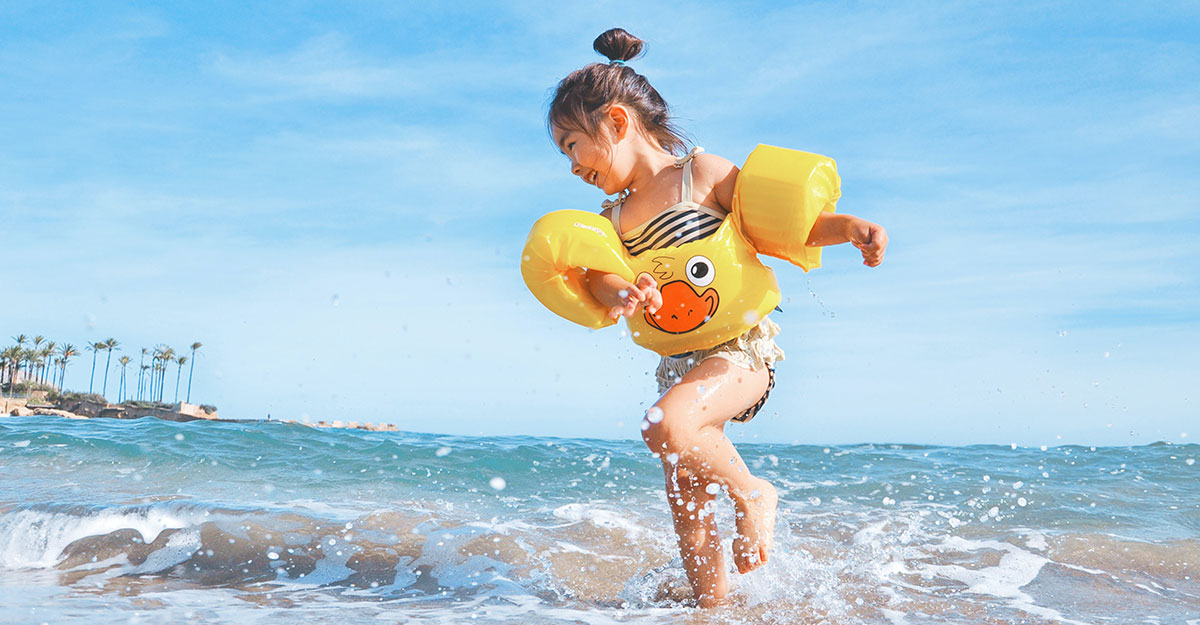
One of the best beach safety tips is to never let non-swimmers or young children play unsupervised near the water. While a sneaker wave may just knock you over, it can cause serious injury to a younger child including sprains, broken bones, or worse. Stay sober and vigilant so the whole family can enjoy the day at the beach.
What You Need to Know About Tsunamis
If you are hanging out at the beach and you feel a small earthquake, you don’t have to worry; most earthquakes are small enough not to generate tsunamis, but you may want to move away from the water as there may be “sneaker” waves coming. However, if the quake is big enough that you have trouble standing up, it’s big enough to produce a tsunami. Time to start running. You have only a matter of minutes to get to higher ground.
Don’t worry about grabbing your swim fins, your surfboard, or even your car—just get your family and sprint as far inland and as high as you can go.
Beach Safety Tips for Evacuating After a Local Earthquake
- In a beach earthquake scenario, many of the standard earthquake survival tips go out the window.
- Ideally, get to a spot 100 feet above sea level or two miles away.
- Every foot inland or upward may make a difference!
- If you can see the wave, you are too close for safety.
- Do not stand on a sandstone cliff to watch the wave even if you are 100 feet above the beach; it may crumble when the wave hits.
- Do not try to evacuate by car. You don’t have time for that. You need to drop everything and run!
Know the Difference!
- A Tsunami WARNING means a tsunami may have been generated and could be close to your area.
- A Tsunami WATCH means a tsunami has not yet been verified but could exist and may be as little as an hour away.
Get access to premium content and more!



